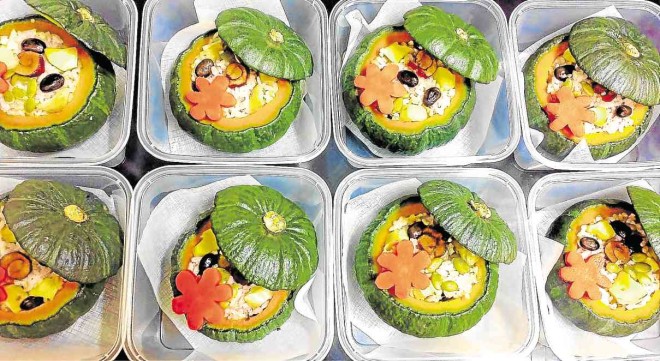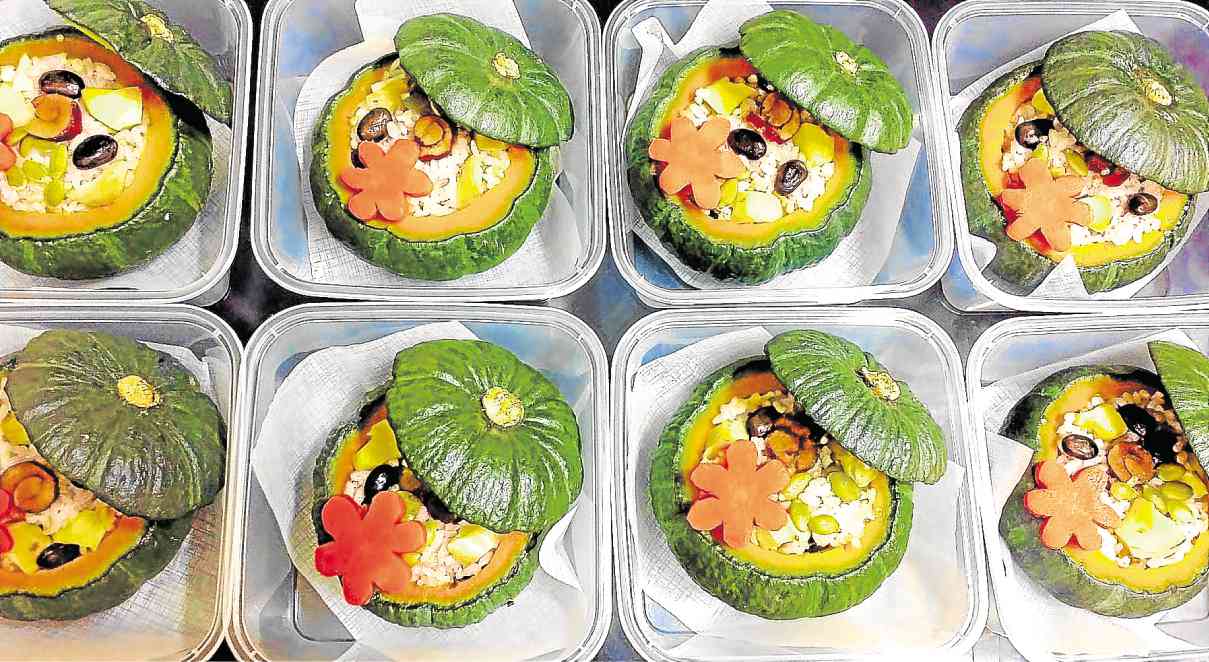
There are more than a hundred kinds of kimchi. Their tastes and flavors are as diverse as the ingredients, the seasonings and the manner they were prepared.
The most common kind and the one we associate the dish with in our mind is made with Napa (aka Chinese) cabbage.
A few years back, I sampled the most delicious rendition of this version of kimchi through former Candaba Mayor Jerry Pelayo. It was a gift from his Korean friend.
I recall that bite of kimchi to be as sublime as fine wine—rounded, perfectly balanced, robust yet with a mellow finish. Not one flavor overpowered the other. It was fermented to perfection!
Not all kimchis are spicy. Some can be sweet, some a bit dry and some watery. An example is the baek kimchi—nonspicy, watery, refreshingly flavorful.
The one at Kiwa Restaurant in Solaire is delicious, a must-try for those who do not like spice. It’s rolled white kimchi (Korean cabbage without chili powder) placed inside a whole Korean pear and served cold.
Though categorized as an appetizer, it can be served as a side dish to a main course. Its fruity character compliments bulgogi in particular.
Visiting Korean chef and food stylist Crystal (Soojung) Woo—who spoke with the help of Chris Choi, junior manager of the Korean Cultural Center—hailed kimchi as the traditional food that represents Korea the best. She described it as “the essential spice and spirit of Korean cuisine,” served from the humblest of eateries to fine-dining establishments and the highest echelons of Korean royal tables.
Here is Woo’s fresh cabbage kimchi recipe:
Fresh Cabbage Kimchi
Fresh kimchi is different from the more common and conventional type of kimchi which needs to be fermented. Fresh kimchi is much easier to make and it is ready to eat as soon as it is made.
3 napa cabbages
800 g coarse salt
30 red chili peppers
1.5 k green onion
200 g chive
1 ¼ c pickled baby shrimp
1 ½ c + 1 tbsp chili pepper powder
3 tbsp. hot water
1 ¼ c garlic
2 ½ tbsp ginger
5 tbsp sugar
Salt and sugar to taste
Sesame oil
Sesame seeds
Remove the coarse yellow outer leaves and the root of the cabbage. Cut it lengthwise into two halves.
Salt the cabbage with coarse salt. Let sit for an hour.
Rinse the leaves under running water and tear the leaves into bite-size pieces. Squeeze leaves dry.
Slice the red chili peppers into 1-inch length and remove all seeds.
Chop the chives and green onions into 1-inch length as well.
Drain the salted shrimp.
Chop ginger finely and mince with the crushed garlic.
Soak Korean chili pepper powder (gochu garu) in warm water and, with your hands, mix in the crushed garlic, ginger, salted shrimp, green onions, red chili peppers and chives to make the kimchi seasoning.
Season with salt, pepper and sugar to taste.
Mix kimchi seasoning with salted cabbage leaves by hand. Mix until the leaves are evenly coated with the kimchi seasoning.
Finish by drizzling with sesame oil and sesame seeds, adjusting the quantity according to taste.
Crystal Woo and the Korean Cultural Center (KCC) in the Philippines, in partnership with Lyceum Philippines University Culinary Institute, will be holding two free workshops on kimchi making and the Korean-style lunchbox on July 2.
E-mail [email protected]









































